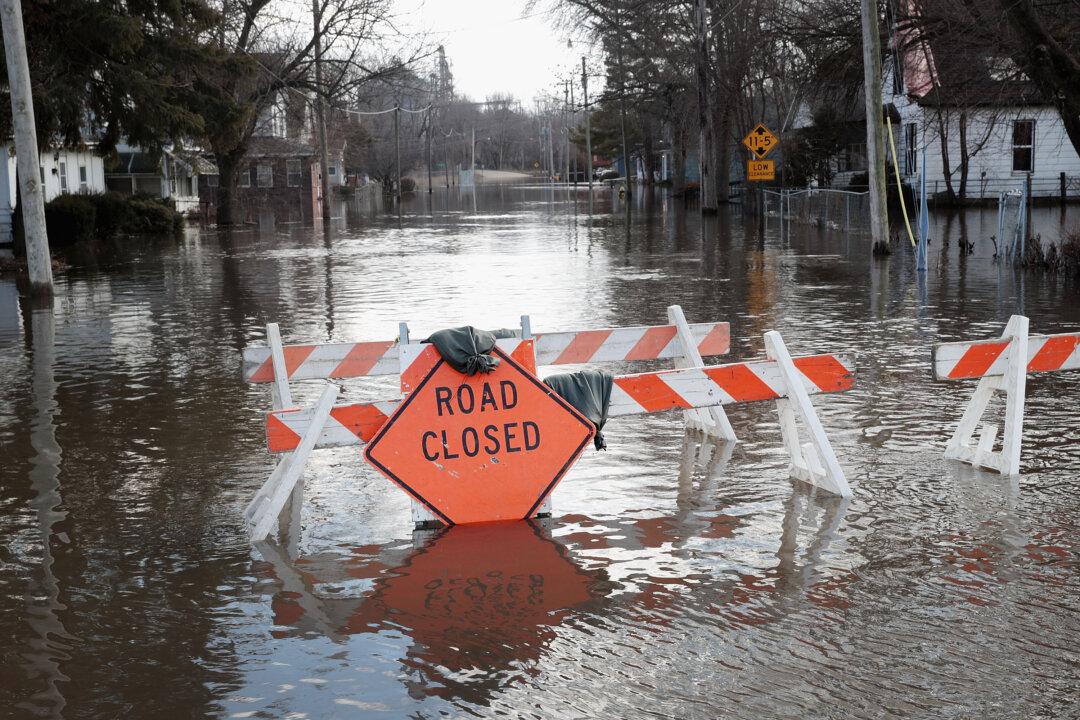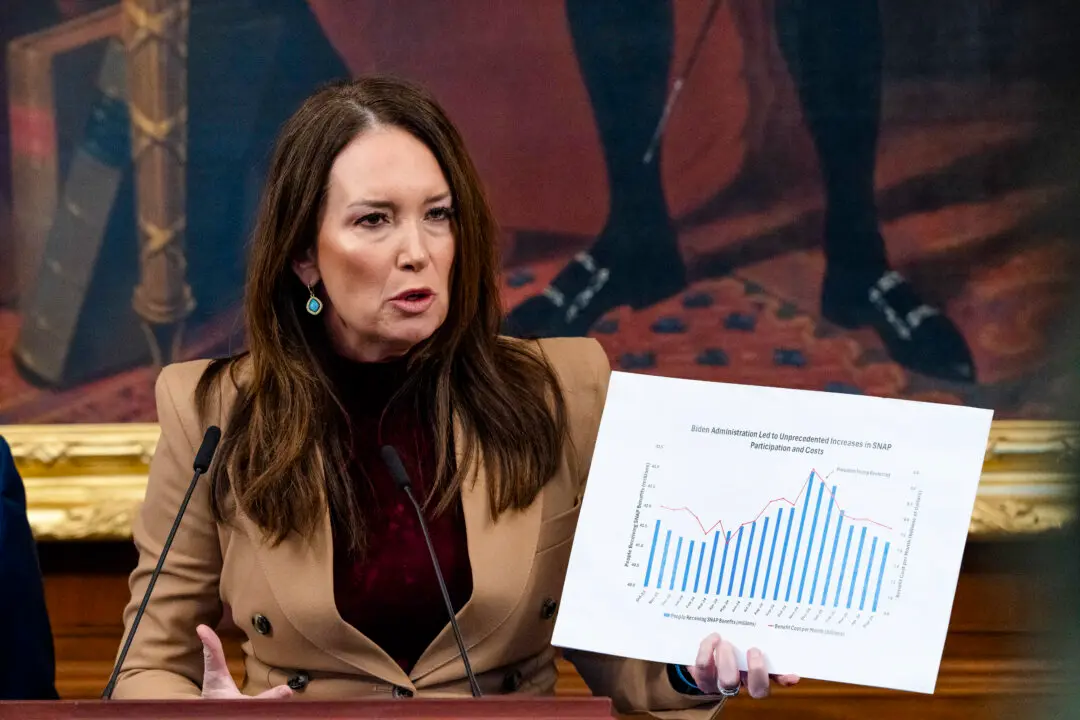The Midwest and South could face “potentially unprecedented” flooding until the end of spring, warned a U.S. weather agency.
According to its outlook for spring, the National Oceanic and Atmospheric Administration (NOAA) says nearly two-thirds of the lower 48 states face an elevated risk of flooding. Most areas, including the Mid-Atlantic and much of the Northeast, could see minor flooding during the season.





